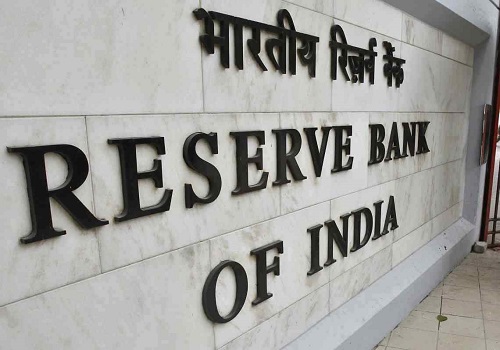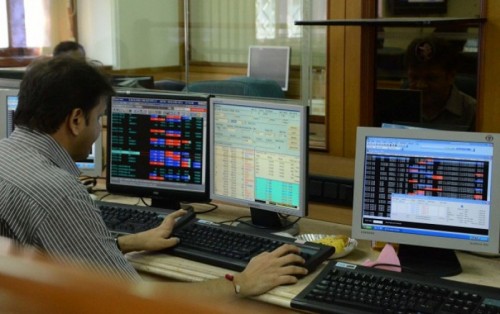Monthly Market Outlook and Presentation by SBI Mutual Fund

2025 Outlook
2024 saw Developed market equities outperform, particularly US equities, a second consecutive year of outperformance. Gold price rallied 30 % in 2024 and has risen 1.5x in the last three years. The US Dollar continued its trend of appreciation.
Heading into 2025, it seems that the markets are placing little emphasis on any significant risks to economic growth. At present there is fiscal policy support across the pacific, and the intent so far seems intact.
The key monitorable will be the direction US economic policy takes. The in-coming Trump administration's policies could cause a disruption in the growth-inflation tradeoff, potentially influencing the policy direction of the US Fed and central banks worldwide. This has been the reason that despite a start to monetary easing cycle, developed market bonds experienced their fourth consecutive year of lacklustre or negative return. With inflation still above the target level, the durability and effectiveness of policy easing in the US remains in question.
If the new US administration's policy mix leads to the Fed maintaining status quo on rates, central banks globally will likely follow suit, particularly if US tariffs provoke a retaliation or currency depreciation and raising inflation in respective economies. There is an ongoing debate on whether tariffs will end on their own or be used as a tool, like sanctions, to extract concessions from other countries.
Looking ahead to 2025, the evolving US tariff regime poses risks to Chinese manufacturing investment, with exports facing potentially significant headwinds, necessitating a pivot towards stimulating stronger domestic demand, particularly consumer spending. Unlike previous stimulus packages focused on infrastructure, the most effective growth driver now may be boosting household consumption. As a result, commodity producers and machinery exporters may not see the same benefits as in previous stimuluses.
In India, we expect both monetary and fiscal policy to increase their focus on growth incrementally. Monetary policy could go slow on the macro prudential tightness and support liquidity (though we do not rule out a shallow rate cutting cycle too). Fiscal policy on the other hand, could go slow on fiscal consolidation and reduce the fiscal deficit by a mere 20-30bps vs. 80-90 bps each year in FY24 and FY25.
In the upcoming union budget 2025, we hope for some enhancement to revenue expenditure and positive changes in the income taxes. Policy support could help India’s growth to recover to ~7% in FY26 from an expected 6.3% in FY25.
2025 could start with a relative out-performance in investment growth over consumption growth. That said, given the hope for policy support, consumption outlook could turn brighter through the course of 2025. Global trade outlook currently is unexciting, though India continues to gain market share in select sectors and could be the last target of US adverse policies. However, unlike 2021 and 2022, exports are unlikely to be the mainstay of India’s growth.
Rupee has depreciated around 3% in 2024. Dollar strength on the back of Trump’s stated policies is leading to lack of FII enthusiasm for EM nations. These problems get compounded by deterioration in India’s basic balance. India’s external account has shifted from comfort to caution, and the biggest reason is the sharp slowdown in net FDI due to dual factors of reduced fresh inflow and sharp jump in repatriation.
Thus, so long as investors continue to buy into the Trump trade and favour the US dollar, the rupee is likely to have a depreciation bias. With a heavy dip in FX reserves, we observe that the RBI’s is allowing the rupee to adjust a bit. One would logically believe into an end for the dollar rally, and most likely with the turn of the year, but given the elevated forward book, a word of caution on rupee remains. We believe the Rupee could weaken further in line with broader dollar strength and relative movement against other currencies.
We are sanguine on the outlook for India’s retail inflation. Two years of vegetable price rise would provide a strong favourable base. And it isn’t like consumer demand is overheating, thus core inflation could stay under control. We have factored in a 15-20% telecom tariff hikes around mid-2025 and continued 5-6% electricity annual tariff hikes. No material rise in transportation cost is also being a big help. Thus, CPI could average under 4.5% in FY26.
In terms of monetary policy, The RBI may need to adjust its liquidity and macro prudential measures to support growth, given that credit growth has slowed and deposit growth remains sluggish. A shallow rate cutting cycle cannot be ruled out.
The recent consolidation in the Indian equity market and some moderation in valuations is a welcome change. Yet despite these corrections, valuation’s richness remains- more so for the broader market. We therefore expect the current consolidation to continue entering CY2025. From a longer-term standpoint, however, the Indian equity story continues to be supported by a healthy growth and earnings upcycle. The current turbulence should bring the focus back on fundamentals. We remain of the view that increasingly the market will become more discerning and move back towards companies which have strong business models, long-term earnings growth visibility and sustainable cashflows.
Overall, the macro dynamics at present remains constructive on Indian bonds. Fixed income yields across tenors continue to provide visibility of higher prospective real returns based on estimated forward-looking inflation. Apart from portfolio diversification, absolute yields as available more so in the shorter end of the curve are extremely compelling with high carry and possible roll down. All possible matrices for valuation including real returns, short term bond spreads etc remain compelling.
Global Economy: All eyes on the US policy
The global economy ended 2024 on a mixed note. After a small bounce in the Jul-Sep 2024 quarter, European data disappointed, while growth across much of emerging market economies seemed to be holding steady, with even some China data showing tentative signs of stabilisation. Once again, the US remained the resilient outperformer.
2024 Market Recap: US Equities Shine, Gold Glows, and Commodities Falter
Developed market equities, particularly in the US, saw their second consecutive year of outperformance. Despite a correction in the final quarter, MSCI India posted a 15% return for the year, with smaller market caps performing notably better. Gold performed strongly (up 30% in 2024), the US dollar strengthened by 7%, and the spread between emerging market (EM) and developed market (DM) bonds continued to narrow. While EM government bonds delivered positive returns, developed market bonds experienced their fourth consecutive year of lacklustre or negative returns. This occurred even as the US Federal Reserve began its monetary easing cycle. With inflation still above the target level, the durability and effectiveness of this easing remain in question. Brent crude prices fell despite rising geopolitical tensions, as demand remained sluggish. After a strong three-year run, industrial metals showed lacklustre performance, as China's growth failed to meet expectations.
Chart 1:
Equity market delivers second year of outperformance

Source: Bloomberg, SBIFM Research; NB Barclays Global Aggregate represents developed market fixed income, EM Aggregate total return Index represents EM fixed Income
Markets Eye 2025 with Optimism
2025 promises to be an interesting year in so many ways: politically, geopolitically, economically and certainly from a policy standpoint.
Markets are looking into 2025 through an optimistic lens. Post the US election, a still robust US economy, expectations of hefty corporate tax cuts, a broad deregulatory agenda and, seemingly, a view that the worst outcomes for global trade will be avoided, have pushed US stocks higher. In Asia, China is promising looser monetary and fiscal policy to support growth on the mainland. Japan sees support from rising income and consumer spending.
As we enter 2025, the market seems to be placing little emphasis on any significant risk to growth. Policy support for growth appears intact, and consumption demand in the US is expected to remain stable and perhaps improve in China and Europe.
Table 1:
Growth expectations across key economies

Source: Bloomberg, SBIFM Research; NB 2024 and 2025 are Bloomberg estimates; India estimates are SBIFM research estimates for the fiscal year; 2024E represents FY25 estimates, 2025E represents FY26 estimates
Disinflation Stalls and Diverges Across Global Regions
The global inflation landscape has become more complex and uncertain. Disinflation has stalled in many regions and is now less synchronized. The downward pressure from falling energy prices and supply chain improvements has weakened, while factors such as fiscal and monetary policies, labour market tightness, and productivity growth have gained prominence.
The deflation in goods prices for US consumers may have reached its limit. Inflation and consumer spending growth in the US will also be influenced not just by the size and scope of tariffs, but also by how much of the cost increase is offset by currency movements or absorbed by profit margins. Restrictive immigration may contribute to stickier services inflation in the US.
Chart 2:
US CPI inflation has flatlined around 2.5-3% since June 2024

Chart 3:
Benefits of better supply chain, lower commodity inflation already in the price

Above views are of the author and not of the website kindly read disclaimer






















